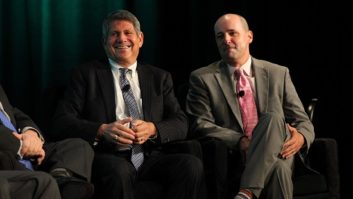
credit: iStockphoto/Vitaliy Yatskin I was asked recently to evaluate a so-called “marketing opportunity” for a client. It concerned a proposal from a company that sells billboard signage. The client wanted to know if the price structure was within the range of what I’ve seen for similar outdoor units. They also wanted my opinion on the effectiveness of rotational electronic outdoor signage.
One of the billboards they were considering carried full-motion graphics but was extremely expensive at 100 percent rotation, so the signage company recommended it be shared with other advertisers.
So … what did I think?
My answer was a litany of questions designed to put my client’s rush to buy on hold (temporarily).
I began by asking whether this was a cold call from the marketing company. Yes, it was. I asked if the station had been looking to buy outdoor advertising. They hadn’t. I asked if they had a budget and an annual marketing plan. They didn’t. I asked if I could come in for a visit to discuss strategy. Sure!
I was glad they called. Not just because I needed another client, though that’s always nice, but because they had realized that it’s always better to be proactive rather than reactive. When stations spend time reacting to incoming marketing pitches instead of determining what they need to do to accomplish real goals first (i.e., setting a marketing plan), they are less likely to succeed.
Tactics
Since we’ve got a bright new year ahead of us, let’s look at the key elements to starting your marketing plan for 2013.
The marketing plan starts with a budget. Even if your company is unwilling to allocate any marketing funds, at least you’re admitting you’ve got zero dollars to work with. And you still want a plan. It will be a different plan, to be sure, but even a station without a marketing budget must put one in place.
Next you need a marketing goal. Perhaps you’d like to raise your target demo ratings by 20 percent, or maybe grow unique visitors to your website by 40 percent or boost your Twitter followers by 80 percent.
Timeframe is important and goals become more realistic when calculated by quarter rather than by year. It’s fine to have both; but if you wait until the end of the year to measure against your goal, you have no way of adjusting your tactics.
The tactical discussion is the most complicated and time-consuming part of the annual marketing process. The budget often determines what media you’ll utilize.
For example, if you’d like to do television advertising but can’t afford the frequency needed to reach the majority of your target audience effectively, you will waste what little funds you do have without even driving a result. It may be much more cost-effective to be on every outdoor billboard and bus in town to reach the largest possible target.
Next, repeat after me: Creative needs to be tested.
Whether these are billboard ads, TV spots, Web banners, direct mail pieces, facebook ads, SMS text messages — you name it, they need to be tested. Don’t spend $100,000 on media placement, $20,000 on creative and nothing on testing!
If you’re operating on the cheap, at least have a panel of outsiders view the creative and ask them simply to tell you what it means. It’s astounding, for example, just how many poorly designed bus ads there are on the streets. Unfortunately, decision-makers typically view these on a computer screen, so every little detail is easy to read.
Take that same creative, blow it up on the side of a bus and very often you’ll find the ad can’t be seen from further away than five feet. And then there’s so much text that when the bus blows by a viewer at 20 mph, the message is too complex to process. If possible, allow your test panel to visualize the ad the way it will manifest in real life.
Without an in-house expert, large stations often need a media agency to help with placement and rate negotiation. Your sales manager likely will advocate using an agency that spends a lot of money with your station. While I have had great success in hiring a suggested favorite, that move does come with a certain degree of politics and compromise.
So what about the “no-budget” plan? This requires the most effort and creativity, and relies on strong, close relationships. Whether TV stations, outdoor companies or websites, there are outlets in every market that will work with you. With today’s smaller staffs, the challenge is finding the right person at your station or cluster who can drive this effort. It may be a sales person who is paid a commission on trades.
Once in place, a “no-budget” plan still requires great care in terms of developing goals, timeframe and testing. Next time you find yourself excited by an unsolicited marketing proposal, consider: While your heart is in the right place, you must now commit to developing and sticking to an annual marketing plan.
The author is president of Lapidus Media and a longtime contributor to Radio World. Email [email protected].










